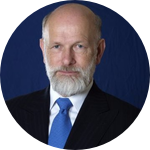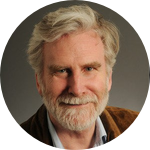About This Project
Mainstream macroeconomics assumes that there is steady rate of economic growth through time, so that any cycles are only temporary and fleeting in nature and due to what economists refer to as "shocks". The research I plan to undertake turns this notion on it's head, and uses cycles identified in the data to understand cyclical interactions between the variables that constitute the core elements of economic growth.
Ask the Scientists
Join The DiscussionWhat is the context of this research?
Macroeconomics largely looks at data in sequential time series format, whereas cycles appear in the data and occur at different frequencies through time, the most important of which is the business cycle, the cycle that has the macroeconomy alternating between periods of growth (expansionary phases) and recession (contractionary phases). So instead of studying data by assuming that any cyclical fluctuations are caused by "shocks" which perturb an otherwise stable system, this project takes cycles as the norm and studies the relationship between cycles in components of national output in different variables.
What is the significance of this project?
The main objective of the research is to increase our understanding of which cyclical spending components drive increases or declines in other cyclical spending components, and at what frequency. The research has potentially important implications, as it should be able to explore if fiscal policy (in the form of government expenditures) interacts with the main private sector components (private consumption and private investment) at different frequencies. This would shed new light on the importance or otherwise, of fiscal policy in terms of how it interacts at different frequencies with both other sources of domestic expenditures and foreign expenditures on exports.
What are the goals of the project?
The goals of this project are to diagnose the cyclical fluctuations in the components of total spending (GDP) in the US economy (private consumption, private investment, government spending and exports) and their sub-components. The cycles will first be extracted using time-frequency domain methods and then cyclical interactions between these cyclical components and sub-components will be explored by means of statistical and econometric methods.
Budget
This project is an initial research project using US data. The MATLAB software is required to run the programs necessary to do the cyclical analysis necessary for the project. The graduate student research assistant will assist with data collection, running programs in MATLAB and preparation of figures and tables for the paper. Lastly, I would plan to present this at the OECD conference that will take place in Rio de Janeiro in early 2018.
Endorsed by
Meet the Team
Patrick M. Crowley
I am a Professor of economics at Texas A&M University-Corpus Christi, and I research mostly macroeconomic and international economic issues. At Texas A&M-Corpus Christi, I teach both undergraduate and graduate courses: principles of macroeconomics,intermediate macroeconomics, international economics, economics of European integration, and a course in money & banking. I specialize in studies of regional integration, with particular emphasis on the European Union, as well as techniques for studying business cycles. I have published widely in high level scholarly journals, and have been the author of several edited volumes for leading book publishers. I am a native of the UK, and also a Canadian citizen, and I have also been a frequent research visitor to the Bank of Finland in Helsinki, and will be a Visiting Researcher at the University of Cape Town in South Africa during the spring semester of 2017.
Lab Notes
Nothing posted yet.
Project Backers
- 3Backers
- 3%Funded
- $104Total Donations
- $34.67Average Donation


